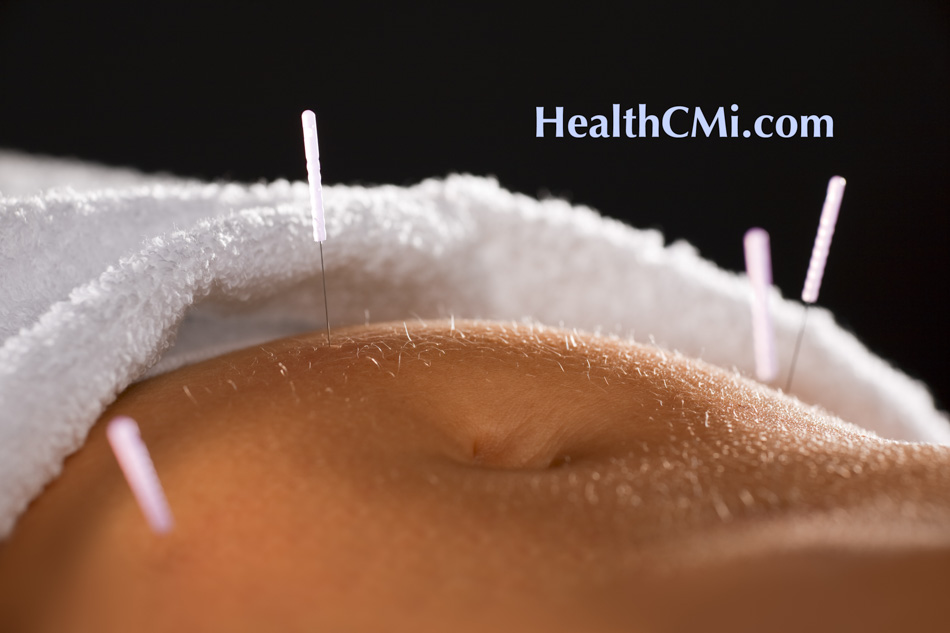A recent study offers compelling evidence on the efficacy of acupuncture as a therapy for managing endometriosis-related pain. The research analyzed 14 randomized controlled trials (RCTs), comparing acupuncture with other treatments, including sham acupuncture, Western medicine, and Traditional Chinese Medicine (TCM). The study evaluated multiple outcomes: pain levels, efficacy rates, serum CA-125, pelvic mass volume, EHP-30 scores, and the recurrence rate after one year. Across all these metrics, acupuncture outperformed the control treatments. [1]
CA-125 is a protein that is often used as a biomarker in medical diagnostics. It is primarily associated with ovarian cancer, as elevated levels of CA-125 can be found in the blood of many women with this type of cancer. However, CA-125 is not specific to ovarian cancer alone and can also be elevated in other conditions, including endometriosis, pelvic inflammatory disease, menstruation, and pregnancy. In the context of endometriosis, CA-125 is sometimes used to monitor the severity of the disease or the response to treatment, as elevated levels can correlate with the presence and extent of endometrial tissue outside the uterus.
EHP-30 (Endometriosis Health Profile-30) is a widely used questionnaire designed to assess the health-related quality of life (HRQoL) of individuals with endometriosis. It consists of 30 items that cover various dimensions of well-being, including pain, emotional well-being, social support, and self-image. The EHP-30 helps clinicians and researchers measure the impact of endometriosis on a patient’s daily life and evaluate the effectiveness of treatments by tracking changes in these scores over time. Higher scores typically indicate a greater negative impact on quality of life.
Due to the significant heterogeneity observed in the results and varying study characteristics, the researchers conducted subgroup analyses focusing on pain level improvement and response rates. These subgroups were based on acupuncture methods, pain types, and types of control treatments. The analysis revealed that acupuncture, electroacupuncture, and auricular acupuncture were particularly effective in reducing pain levels compared to control groups.
Acupoint selection also played a crucial role in treatment efficacy. Thirteen of the reviewed studies detailed their acupoint choices, with the Ren Meridian and Spleen Meridian being the most commonly targeted. The Ren Meridian, known in TCM as the Sea of Yin Channels, is closely linked to uterine health, while the Spleen Meridian is associated with blood circulation. Acupoints such as Zhongji (CV3), Guanyuan (CV4), Qihai (CV6), and Sanyinjiao (SP6) were frequently used due to their relevance in regulating menstruation and alleviating pain. The timing of acupuncture was also critical, with most studies administering treatments 5–7 days before menstruation, each session lasting 20–30 minutes. [1]
When comparing these findings with previous meta-analyses, the current study reinforces the positive impact of acupuncture on pain reduction, response rates, and serum CA-125 levels. However, it stands out by focusing solely on acupuncture as a monotherapy, unlike previous studies that included combinations of acupuncture with other TCM practices. This specificity allowed the study to clearly demonstrate the standalone benefits of acupuncture for endometriosis-related pain. [1]
The mechanisms of pain in endometriosis are complex, involving anatomical structures, the pelvic microenvironment, and the nervous system. Acupuncture, known for its analgesic properties, has demonstrated effectiveness in relieving this pain by enhancing the body’s analgesic, endocrine, immune functions, and improving blood rheology. The following findings were presented in the study:
Analgesic Effects
Pain in endometriosis is partly driven by increased levels of prostaglandins (PGs), particularly Prostaglandin E (PGE), which stimulate uterine contractions, leading to increased intrauterine pressure and reduced blood flow. Studies, including one by Bai et al. on a rat model, have shown that acupuncture can significantly increase blood and endometrial PGE2 levels while reducing PGF1α levels. Additionally, acupuncture normalizes electrolyte imbalances—such as low serum Ca2+ and elevated K+, Na+, and Cl− (that are associated with dysmenorrhea), suggesting it helps alleviate pain by restoring these balances.
Endocrine Regulation
Endometriosis is an estrogen-dependent condition, where hormonal changes influence the growth and survival of ectopic endometrial cells. The condition is characterized by a decrease in ectopic endometrial ERα and an increase in ERβ compared to normal endometrial tissue. Acupuncture has been shown to modulate the ERα/ERβ ratio, leading to a reduction in the size of ectopic cysts. This modulation finds that acupuncture regulates the hormonal imbalances that contribute to the progression of endometriosis.
Immune Function
Endometriosis progression is also linked to immune system dysregulation, affecting the implantation and growth of endometriotic tissue. Research has demonstrated that acupuncture significantly reduces serum levels of immunoglobulins IgA, IgG, and IgM, and increases the ratios of immune cells like CD3, CD4, and the CD4/CD8 ratio. Additionally, acupuncture enhances NK cell activity in peritoneal fluid and lowers serum levels of pro-inflammatory cytokines IL-1 and IL-6. These changes indicate that acupuncture can correct immune dysfunction by reducing excessive humoral immune responses and enhancing cellular immunity, helping to manage the symptoms and progression of endometriosis.
Source:
1. Archives of Gynecology and Obstetrics, Acupuncture for clinical improvement of endometriosis-related pain: a systematic review and meta-analysis.


